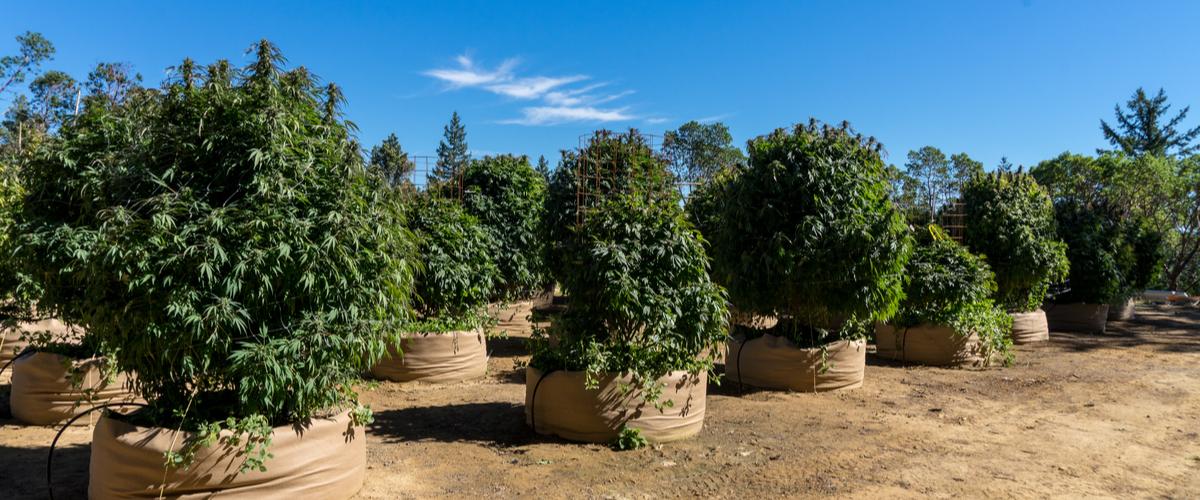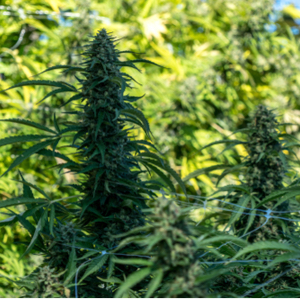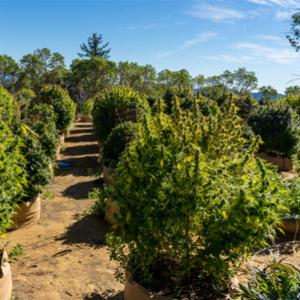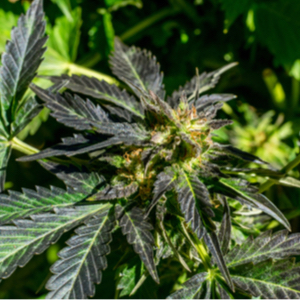- It is common to come across impressive king-size cannabis plants in specialised magazines, social networks, or when visiting American cannabis farms.
- We are talking about real cannabis trees that can reach extraordinary dimensions and deliver massive yields.
- In this post we share our top tips on how to grow these XXL marijuana plants effectively.

Choosing the strain
Choosing a strain with the right yielding potential is the first thing you need to do to get off to a good start. The best option is an Indica-dominant strain or an Indica/Sativa balanced and productive hybrid.
Your experience as a grower must also be taken into consideration. If you are a beginner, or have been growing cannabis only for a short time, we recommend a Skunk strain such as Critical +, Critical 2.0, Industrial Plant, Power Kush, Cheese, Critical Cheese, Moby Dick, Amnesia Kush, Big Kush, Kush'N'Cheese, Original Amnesia, Critical Jack, Orange Juice, Purple Moby Dick, Purps #1, or Critical Kush.

These genetics are easy to grow and produce heavy yields. They grow vigorously, developing a structure with extensive branching similar to that of a Christmas tree. They work very well with SCROG (Screen Of Green technique). Topping the plant also works well for growth enhancement.
If you are an experienced grower, you can choose more delicate and complex hybrids, such as Blueberry Cookies, Dinachem, Gorilla, Ocean Grown Cookies, OG Kush, Purple Afghan Kush, Remo Chemo, Sweet Deep Grapefruit, or Strawberry Amnesia.
These strains require specific pruning methods for optimum yields, such as strain-specific progressive and successive trimming. Strains with high Sativa dominance are not a good option for this type of techniques because they are less productive: their flowers are elongated, aerated, and less dense; hence their lower yielding capacity.
The importance of a good substrate and container
The Instagram pictures of some Californian growers are a clear example of how important containers are. Cannabis plants require plenty of space so that they can grow efficiently until reaching those gigantic dimensions. They need at least between 1000 and 1500 litres of substrate each.
A good substrate is key to the success of such a massive project. The more space the roots have, the more vigorously they will grow. If the substrate is not sufficient for the plant, you will be restricting its development and therefore its size and yielding capacity.

The amount of substrate per plant must be in accordance with the size of the garden. Most Californian growers make big holes in the ground (of 1000-1500 L) and they fill them up with a homemade mix called 'supersoil'; or they alternatively use large geotextile pots.
The great advantage of this method is that the substrate gets perfectly oxygenated, which significantly accelerates the plant's metabolism. The plant develops more effectively because it can absorb the available resources more quickly.
Geotextile pots, a favourite option amongst Californian growers, are especially suitable for organic cannabis crops, as they encourage the activation of the microorganisms that live in the ground.
Soil preparation
Soil preparation is also key to the success of your crop. Cannabis plants require a large, well-oxygenated space so that they can breathe correctly, and the use of geotextile pots is also highly advised.
The aim is to find an ideal balance in the soil: we want to create a well oxygenated structure with all the nutrients required for optimum plant growth.
Here is a simple recipe to prepare a good organic substrate:
- Mycorrhizas and Trichoderma (apply in roots when repotting).
- 30% white peat
- 30% black peat
- 10% sphagnum, a type of moss.
- 10% vermicompost
- 10% coco coir
- 10% perlite
- A layer of Biochar and straw on the surface to prevent evaporation.
A superficial layer of diatomaceous earth can also be added as an insulating layer and as a repellent of substrate flies and other parasites. This prevents parasites from laying their eggs in the soil. Among other things, larvae feed on the root hairs, which can directly interfere with plant growth, and can trigger the appearance of fungal diseases.
The importance of a long growth phase
Logically, the preparation and duration of the growth phase directly influence the cannabis plant's size and final yield. For this reason, you need to get ahead of the game and germinate the seeds indoors by early February, so that plants have a longer growth phase that will ultimately translate into bigger outdoor plants.
The indoor growing space must be big enough to accommodate all the plants. To ensure their roots grow strong and healthy it is better to transplant them progressively, with a controlled frequency. You will also need to use different artificial lighting systems (T5 fluorescent neon tubes, CFL, MH, LED, CMH/LEC, or HPS), with an 18/6 photoperiod during the growth phase.
By early March you will already have seedlings that you will need to encourage to grow for three months. During this time seedlings need to be transplanted progressively and carefully.
Transplants must be carried out whenever necessary, as soon as roots start to appear under the pots, as this is a sign that the plant does not have enough space to continue growing.
We cannot specify times for this because each strain has its own timings, but roughly speaking, they will have to be repotted 4 or 5 times every 3 weeks. Geotextile pots help accelerate growth. It's best to start with 1 L pots and then change to 3 L, 7 L, and then finally 15-20 L pots before moving the plants outdoors.

It is important to remember to provide the plants with as much space as possible during this whole process, so that they can grow 'comfortably' and stress-free. It is advised to apply a root growth stimulator once a week from the third week of growing. Compost tea also assists plants in their recovery after repotting and provides them with extra strength.
Every strain requires a different fertiliser dosage. For instance, Indica hybrids need more nutrients than Sativa hybrids. Always look for specific information on the nutrition requirements of the strains that you are growing, as well as other specific growing needs. At the end of the indoor vegetative phase, plants should be between 1.40 and 1.80 metres high, depending on the chosen genetic.
If the plants are within this range, this is definitely a very good sign. In mid-May or early June, when plants are already planted in their final containers, preferably in your greenhouse or outdoors, they will still have two full months to carry on growing.
These plants can potentially double or treble their size during this time. The outdoor soil must be prepared in advance so that plants are in top condition when moved outdoors.
There are some preventive measures to keep in mind before moving your plants outdoors:
- Subject your plants to a 2-day period of complete darkness to reduce the stress caused by the light spectrum change (from artificial to natural), but also to prevent them from starting flowering due to the reduction of hours of light.
- It is best for the plants to get used to natural sunlight little by little, by gradually getting them closer to a big window so that they start to catch some natural light. This process should last between 2 and 3 days at least, preferably 3 rather than 2. They should be kept around 3 metres away from the window on the first day, and then down to 1 metre away on the third day.
- Once outdoors, the temperature must be monitored so that the change between the indoor and outdoor temperatures does not come as a shock to the plants. When doing the last outdoor transplant, it is advised to apply Trichoderma and Mycorrhizas in the last growing pot. A good compost tea during the following days will prevent stress and help the plant adapt to this new growing space.
Pruning techniques and accessories used with big plants
Pruning techniques:
Topping is the best training technique for the strains recommended to beginners. Topping allows you to effectively control the size of your plants but also to multiply the production of new buds in the plants' secondary branches.
Another useful technique is trimming the lower branches that do not get as much light. This promotes more uniform production of flowers on the top part of the plant. We recommend carrying out these two pruning techniques in mid-June so that the plants can grow and develop their structure until early August, which is when flowering starts in Europe.

Regarding the 'more delicate strains', you will have to rely on your experience and trust your own judgement. At different times throughout the growing phase, you will need to trim leaves, buds, and branches that hinder the plants' homogenous structural development or the appearance of new flowers.
Crop planning involves foreseeing how the plants will evolve and grow so that the growing space is free from obstacles that could hinder their development and productivity. 'New School' genetics require the trimming of their lower branches. For this purpose, experienced growers can use techniques such as super cropping, FIMming, schwazzing, etc.
Plant staking:
When the plants are already outdoors, a cylindrical trellis can be installed to guide and manage their growth. This is a stable and reliable, typically Californian staking method, mostly using a wire mesh of 10-20 cm.
Cylindrical trellis netting is like a cage adapted to the plant that prevents side branches from bending due to the heavy weight of their flowers and helps them catch more light, contributing to its good ventilation too. This also reduces the risk of fungi and excessive perspiration when it's really hot. We recommend installing this system in late June / early July.
Another simple trellising technique involves the use of 10-20 cm square netting made of nylon or synthetic plastic. It can be used horizontally to support the top of the plant, especially the area close to the main cola, but also the branches on the top half. This provides efficient, double structural support.
This netting can also be used vertically to prevent side branches from breaking due to the heavy weight of their flowers, as well as to improve air circulation. We recommend installing it in mid to end of June in Europe. If you install it too late, there is the risk that the plant will partially deteriorate.
Feeding large cannabis plants
There are many ways we can fertilise our cannabis plants. A good option is to choose organic growing methods; a homemade organic blend and organic fertilisers can be used as supplements from the very beginning, as well as compost tea added sporadically.
A hybrid method can also be used, including an organic soil preparation and ready-to-use fertilisers. You must pay special attention to changes in the climate that affect temperature and humidity so that you can respond to your plants' needs accordingly.
These giant cannabis plants obviously need more water than smaller plants, so you should have all the right equipment at hand to attend to their requirements. You will need to invest in a large capacity water tank. You will also need a high-quality electric water pump, or a watering hose long enough to reach your crop.
All these tools will allow you to work efficiently in a shorter time and using less effort. You can invest the time you save in other tasks or in your favourite pastimes!




Comments from our readers
There are no comments yet. Would you like to be the first?
Leave a comment!Did you like this post?
Your opinion about our seeds is very important to us and can help other users a lot (your email address won't be made public).